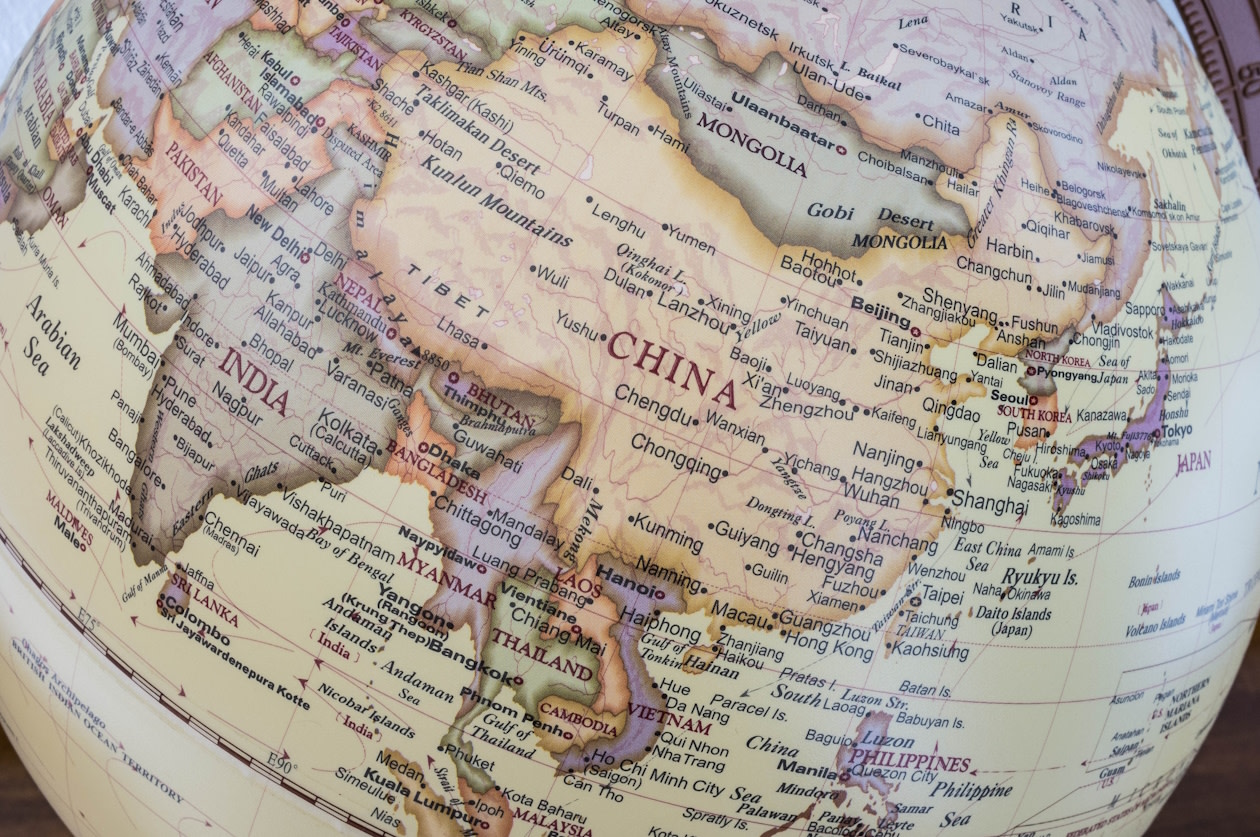It’s been 10 years since Donald Trump first ran for political office under the promise to ‘Make America Great Again’ and a lot has happened since.
Trump served his first term as US President in 2016 before failing in his re-election bid, only to be victorious for a second term last year.
Constants throughout this time have been red MAGA hats and the continuation of Trump’s promise.
But will it come true? Or could trade wars, spats with other world leaders, and a lack of diplomacy be relegating the US on the world stage?
And with the country already well-positioned as the world’s second largest economy, could Trump’s actions actually be making China great again?
This article isn’t personal advice. If you’re not sure an investment is right for you, ask for financial advice. Remember, all investments and any income from them can rise and fall in value, so you could get back less than you invest. Past performance also isn’t a guide to the future.
Trade wars – will tariffs work?
During his first term as US President, Trump started a trade war with China due to what he considered unfair trade practices.
Trump imposed tariffs in an attempt to hit China’s export-heavy economy. The rhetoric continued and during his 2024 election campaign Trump weighed the idea of increasing the tariff rate to 60%.
The idea here is instead of paying a tariff to import goods from China, US companies and consumers will manufacture and buy goods domestically.
This causes China’s economy to shrink as its manufacturing output declines while the US economy grows as its manufacturing output increases.
But will it work?
In 2024, manufacturing accounted for nearly a quarter of China’s gross domestic product (GDP). This was 6% higher than 2023 and is a key driver of economic growth.
After Trump announced his latest raft of global tariffs on 2 April, China retaliated. The escalating situation caused US tariffs on goods from China to increase to 145%. At the time of writing, these have lowered to 30%.
The climbdown from the US has shown that perhaps China is stronger than first thought. Despite low consumer confidence and a slump in the domestic property market, China’s economy still achieved the government’s 5% growth target last year.
While the US is China’s largest export partner, over a third of Chinese exports are to neighbouring countries in the Asia Pacific.
A reliance on Chinese goods means these countries are unlikely to engage in trade disputes of their own, especially as most have also been targeted by the US. This could well lead to deepening trade relationships with China.
These neighbours have also become hubs for Chinese manufacturers, with production taking place offshore in countries like Vietnam.
Goods can be exported to the US from there, masking their true origin as a way of bypassing tariffs or trade restrictions. That said, Vietnam was also hit with initial US tariffs of 46%.
Mexico has been another target for the expanding Chinese manufacturing sector in a process called ‘nearshoring’.
Companies from China have been building factories close to the Mexico-US border and exporting to the US from there.
With the Chinese consumer remaining somewhat downbeat, the escalation of the trade war has also provided President Xi Jinping with a scapegoat for any potential economic struggles.
Xi’s grand tour
Since coming to power in 2012, Chinese Premier Xi Jinping has been on a mission to boost economic ties with other developing nations. This has arguably become more important given tensions with the US.
In April this year, Xi visited Vietnam, Malaysia and Cambodia. China aims to be seen as a dependable partner at a time when US policy is leading the country to alienate itself on the world stage.
The tour of Southeast Asia follows a similar visit to South America in November, shortly after the US election.
The centrepiece of that trip was the Asia-Pacific Economic Cooperation summit and the inauguration of the Chancay port in Peru.
This project has been financed by China and will allow the largest container ships to travel directly between China and South America – bypassing Mexico and, most importantly, the US.
Despite all this diplomacy, countries will be wary of becoming too entangled in the rivalry between China and the US. Many have defence treaties or military partnerships with the US that they’ll be keen to maintain.
With an everchanging geopolitical landscape and the market volatility that comes with it, the prospect of a ‘great’ China could present opportunities for investors.
2 fund ideas to invest in China
Investors looking to invest in China have plenty of options. Here are two fund ideas from our Wealth Shortlist – these are funds chosen by our analysts for their long-term performance potential.
Investing in funds isn't right for everyone. Investors should only invest if the fund's objectives are aligned with their own, and there's a specific need for the type of investment being made. Investors should understand the specific risks of a fund before they invest, and make sure any new investment forms part of a long-term diversified portfolio.
For more details on each fund and its risks, please see the links to their factsheets and key investor information below.
FSSA Greater China Growth
The FSSA Greater China Growth fund invests in companies across the Greater China region, including China, Taiwan and Hong Kong.
The fund is managed by Helen Chen, who is supported by Martin Lau, the previous lead manager involved with the fund since it launched in 2003.
The manager looks for companies with a competitive advantage that others struggle to replicate. This is something like a well-known brand or the ability to raise prices for their products, without affecting demand from customers.
The fund invests in emerging markets and can invest in smaller companies, which can both increase risk. As it’s focused on a single region, it should only ever make up a small amount of an investment portfolio.
Annual percentage growth
Apr 20 – Apr 21 | Apr 21 – Apr 22 | Apr 22 – Apr 23 | Apr 23 – Apr 24 | Apr 24 – Apr 25 | |
|---|---|---|---|---|---|
FSSA Greater China Growth | 39.42% | -15.52% | 1.11% | -5.95% | -2.81% |
MSCI Golden Dragon | 32.46% | -20.71% | -5.66% | 2.79% | 11.72% |
IA China/Greater China | 34.11% | -24.60% | -7.50% | -10.49% | 6.40% |
Schroder Asian Alpha Plus
The Schroder Asian Alpha Plus fund invests in countries across Asia, offering significant exposure to China but probably with less volatility than a single country fund.
At the end of April, it had over a quarter of the fund invested in China, with a further 19.80% in Taiwan and 10.07% in Hong Kong. It also invests in other emerging markets like India and Thailand – remember though, the amount invested in each country can change over time.
The fund is managed by the experienced Richard Sennitt, who’s been investing in Asia for over 20 years. Sennitt is supported by his co-manager Abbas Barkhordar.
The duo search Asian markets for high-quality companies that have good cash flows, strong franchises, a quality management team, and a strong business model that's able to defend against competition.
The fund invests in emerging markets and can invest in smaller companies and derivatives, which increases risk.
Annual percentage growth
Apr 20 – Apr 21 | Apr 21 – Apr 22 | Apr 22 – Apr 23 | Apr 23 – Apr 24 | Apr 24 – Apr 25 | |
|---|---|---|---|---|---|
Schroder Asian Alpha Plus | 44.03% | -11.74% | -4.78% | 3.93% | -0.44% |
MSCI AC Asia Pacific ex Japan | 35.68% | -9.23% | -5.21% | 8.29% | 3.94% |
IA Asia Pacific ex Japan | 38.57% | -8.26% | -4.19% | 4.94% | 0.51% |
Open a new HL Stocks and Shares ISA or SIPP today and enjoy 40% off your account charge
Open your ISA or SIPP and add at least £10,000 (including cash and/or transfers) by 30 June 2025
The 40% discount applies between 1 July and 31 December 2025
If you're transferring, your reduced charge will start once your transfer completes, and continue until 31 December 2025
Need more time to apply to transfer? Contact our Helpdesk.
Important: This offer reduces the HL account charge. Our standard account charge is no more than 0.45% a year. Other investment charges may still apply. Buying and selling funds is free. Share and ETF dealing charges apply. See the full ISA offer terms and SIPP offer terms.


